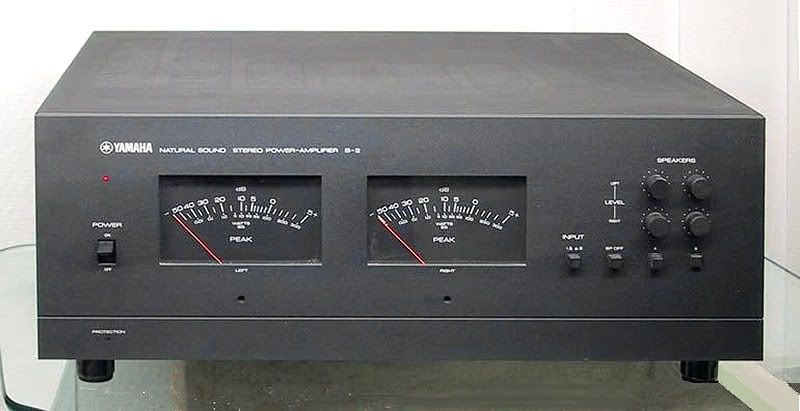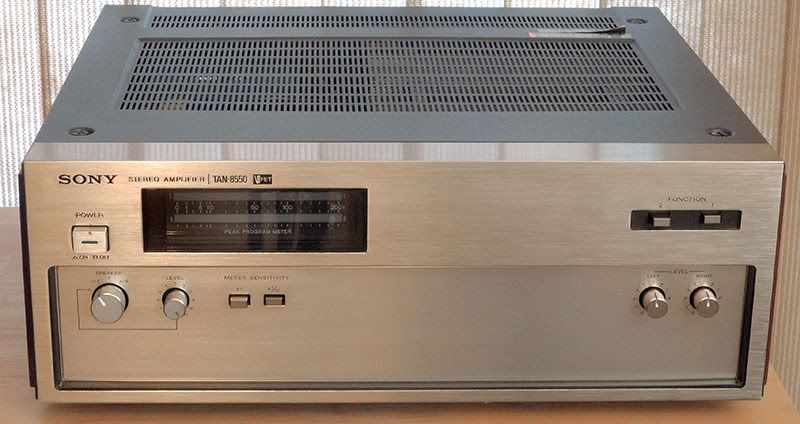wualta
Orthodynamic Supremus
- Joined
- Sep 12, 2004
- Posts
- 4,596
- Likes
- 146
Quote:
Har! Over the last 5 years I think I've talked 2 people into trying this flavor of the month, and, though I think they appreciate what they got for their money, their enthusiasm is, shall we say, well damped.
We compared the Kyocera R-851 (bone stock, built in 1985) to the fancy amps at the local meet recently, and though it didn't sound as good, you could tell it was heading in the same direction as the new amps, plus it came with extra toys: phono stage (MM and MC), preamp (volume, EQ, filters, mono/stereo, balance) and enough power to drive difficult speakers. Plus it has that cool Freon heat pipe cooler for the outputs. But if you want any 25-year-old audio gear to sound the way it was supposed to sound, judicious replacement of certain old parts, usually capacitors, is necessary.
Quote:
Yes, it's got a better sounding name than Yellow Tail, which sounds like a hamster disease.
Quote:
Agreed. Just be aware that there's a lot of production variation with the 3. Some are bassy, some are nearly flat.
Quote:
Well, the Marantz 2216 doesn't have MOSFET outputs, but it's not a bad receiver. If you can get it cheap, why not. But note that its tone controls (EQ to us) are rudimentary and not very flexible... and that it is what it is, a decent mid-'70s transistor amp with a tuner and preamp, with a sound that doesn't transcend its time.
If you want to stick a toe in to test the waters, I found a simple CMoy sounded very nice with the modded YH-100-- which is certainly not the most efficient headphone ever produced-- and gave it a good kick in the bass when I added some boost. You can work your way up from there if you decide you like what you hear. Total expenditure so far, including refurb 2GB Sansa Clip: $60 or so, ballpark. Assuming you can indeed get the HP-3 for a song, or the price of a CD.
| Originally Posted by dBel84 /img/forum/go_quote.gif if you do read this thread , big old mosfet receivers are FOTM |
Har! Over the last 5 years I think I've talked 2 people into trying this flavor of the month, and, though I think they appreciate what they got for their money, their enthusiasm is, shall we say, well damped.
We compared the Kyocera R-851 (bone stock, built in 1985) to the fancy amps at the local meet recently, and though it didn't sound as good, you could tell it was heading in the same direction as the new amps, plus it came with extra toys: phono stage (MM and MC), preamp (volume, EQ, filters, mono/stereo, balance) and enough power to drive difficult speakers. Plus it has that cool Freon heat pipe cooler for the outputs. But if you want any 25-year-old audio gear to sound the way it was supposed to sound, judicious replacement of certain old parts, usually capacitors, is necessary.
Quote:
| Originally Posted by dBel84 /img/forum/go_quote.gif Travagan's Red taste any good? sounds like it should. |
Yes, it's got a better sounding name than Yellow Tail, which sounds like a hamster disease.
Quote:
| Originally Posted by dBel84 /img/forum/go_quote.gif - grab the HP3 , the small driver Yamaha's have some of the best magic |
Agreed. Just be aware that there's a lot of production variation with the 3. Some are bassy, some are nearly flat.
Quote:
| Originally Posted by jp_zer0 /img/forum/go_quote.gif Something like this? :|D |
Well, the Marantz 2216 doesn't have MOSFET outputs, but it's not a bad receiver. If you can get it cheap, why not. But note that its tone controls (EQ to us) are rudimentary and not very flexible... and that it is what it is, a decent mid-'70s transistor amp with a tuner and preamp, with a sound that doesn't transcend its time.
If you want to stick a toe in to test the waters, I found a simple CMoy sounded very nice with the modded YH-100-- which is certainly not the most efficient headphone ever produced-- and gave it a good kick in the bass when I added some boost. You can work your way up from there if you decide you like what you hear. Total expenditure so far, including refurb 2GB Sansa Clip: $60 or so, ballpark. Assuming you can indeed get the HP-3 for a song, or the price of a CD.



























